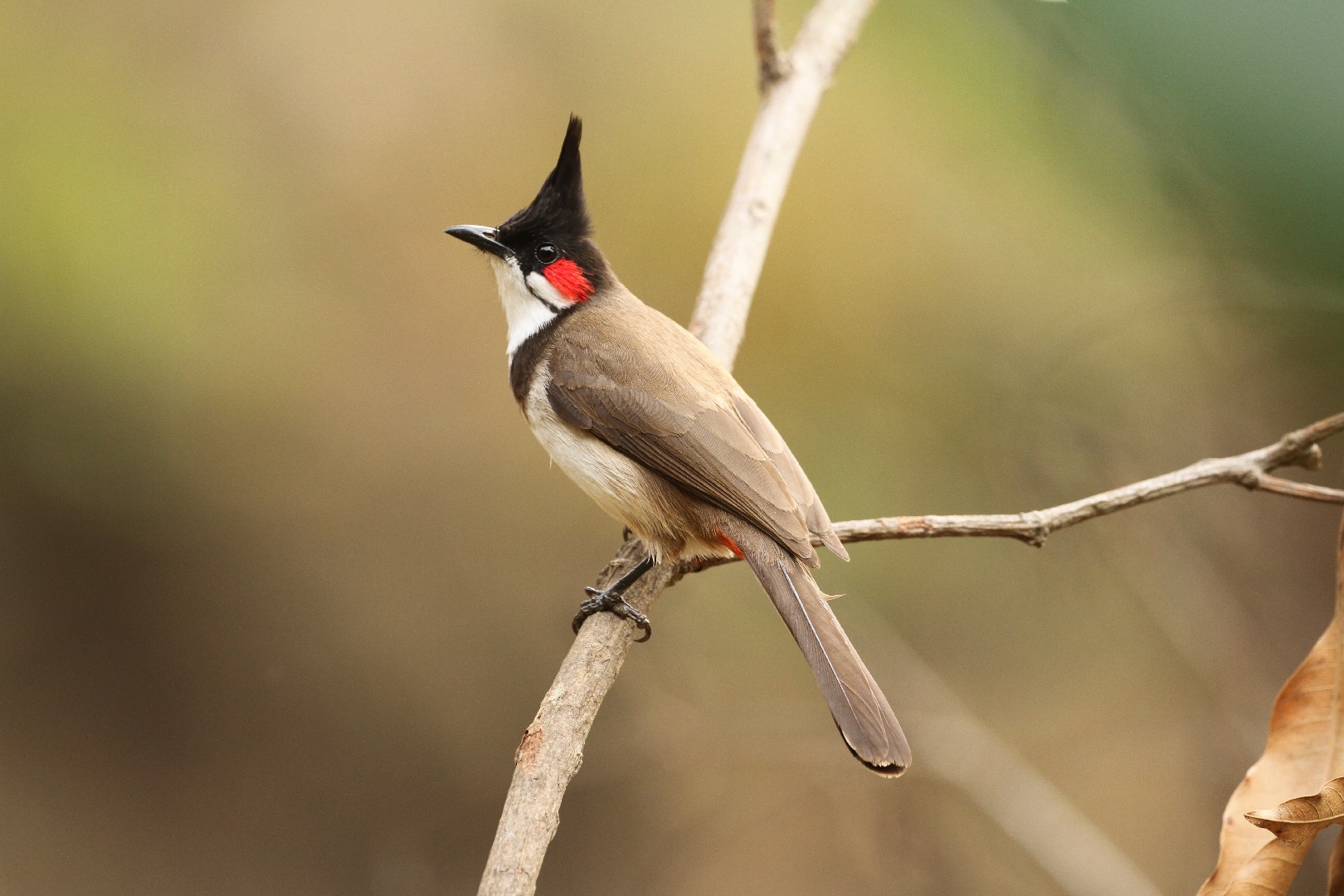Red-whiskered Bulbul
A species of Typical Bulbuls Scientific name : Pycnonotus jocosus Genus : Typical Bulbuls
Red-whiskered Bulbul, A species of Typical Bulbuls
Botanical name: Pycnonotus jocosus
Genus: Typical Bulbuls
Content
Description People often ask General Info
 Photo By Davidvraju , used under CC-BY-SA-4.0 /Cropped and compressed from original
Photo By Davidvraju , used under CC-BY-SA-4.0 /Cropped and compressed from original Description
The red-whiskered Bulbul is an invasive species to North America and poses a threat to agriculture by damaging crops, outcompeting other species, and distributing non-native seeds. Otherwise, these birds can be found in lightly-wooded areas where it thrives on fruits and insects. Although it is an invasive species, native populations are believed to be on the decline.
Size
18 cm
Life Expectancy
4 years
Nest Placement
Tree
Feeding Habits
Red-whiskered Bulbul consumes fruits (some toxic to mammals), nectar, and insects, showcasing versatile feeding behaviors and a unique tolerance for certain toxins.
Habitat
Red-whiskered Bulbul resides in diverse environments, from light woodlands to agricultural landscapes, typically near human settlements like parks and gardens. It adapts to both native and modified habitats, frequently seen in wetter regions from sea level up to 2,000 meters. Its habitat extends broadly over hilly areas, secondary growth forests, urban spaces, and plantations.
Nest Behavior
During Florida's breeding season (February to June), red-whiskered Bulbul exhibit tolerant nesting behavior and engage in courtship displays, such as wing fluttering and crest raising. After nest-building, both parents tend to the eggs and chicks.
Nest Characteristics
Red-whiskered Bulbul's nest is typically set in a low shrub, vine, or small tree, 2-8' from the ground. The cup-shaped nest is constructed with grass, weeds, rootlets, and casuarina needles, and adorned with paper, plastic, or bark.
Dite type
Frugivorous
People often ask
General Info
Feeding Habits
Bird food type

Fruit
Bird Feeder Type

Platform
Behavior
On the island of Réunion, this species established itself and also aided the spread of alien plant species such as Rubus alceifolius. Populations of the red-whiskered bulbul on the island of Reunion have diversified in the course of thirty years and show visible variations in bill morphology according to the food resources that they have adapted to utilize. 
Distribution Area
It has established itself in Australia and in Los Angeles, Hawaii, and Florida in the United States, as well as in Mauritius, on Assumption Island and Mascarene Islands. The red-whiskered bulbul was introduced by the Zoological and Acclimatization Society in 1880 to Sydney, became well established across the suburbs by 1920, and continued to spread slowly to around 100 km away. It is now also found in suburban Melbourne and Adelaide, although it is unclear how they got there. 
Species Status
Not globally threatened.
Scientific Classification
Phylum
Chordates Class
Birds Order
Perching birds Family
Bulbuls Genus
Typical Bulbuls Species
Red-whiskered Bulbul